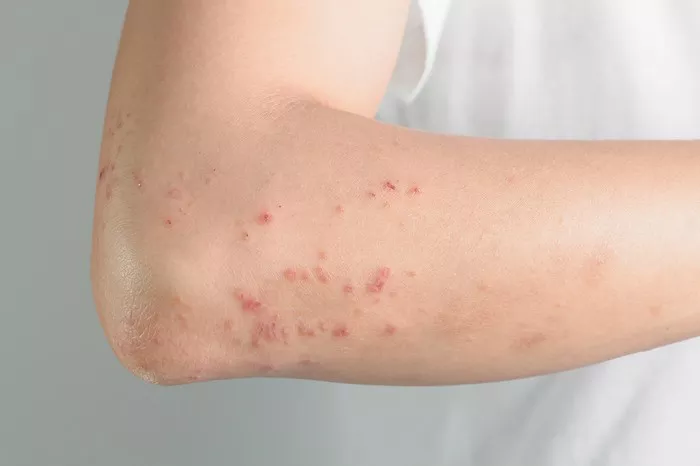A study published in JAMA Dermatology has found that the calcitonin gene-related peptide (CGRP)-receptor monoclonal antibody erenumab may effectively reduce flushing and chronic erythema associated with rosacea. CGRP has been implicated in the pathogenesis of rosacea due to its role in vasodilation and inflammation.
Researchers in Denmark conducted a single-center, open-label, nonrandomized controlled trial to evaluate the effectiveness, tolerability, and safety of erenumab for rosacea patients. The trial, which ran from June 2020 to May 2021, included adults with rosacea who experienced at least 15 days of moderate to severe erythema and/or flushing. Participants received 140 mg of subcutaneous erenumab every four weeks for 12 weeks, with a safety follow-up at week 20.
The primary outcome measured was the mean change in the number of days per month with moderate to extreme flushing from baseline to weeks 9 through 12. Flushing severity was assessed using the Flushing Assessment Tool (FAST), while erythema severity was evaluated using the Clinician Erythema Assessment. Overall rosacea severity was measured using the Investigator Global Assessment, the Rosacea Area and Severity Index, and the Rosacea Clinical Scorecard.
Secondary outcomes included changes in FAST scores from baseline to weeks 1 to 4 and weeks 5 to 8, the proportion of patients with at least a 50% reduction in flushing days from weeks 9 to 12, and changes in several other rosacea severity scores and quality of life measures.
The study cohort comprised 30 participants with a mean age of 38.8 years, of whom 77% were women. Three participants discontinued the study, leaving 27 for final analysis. Most participants had previously discontinued at least one rosacea treatment due to ineffectiveness or intolerance. These treatments included topical therapies such as azelaic acid and oral treatments like doxycycline.
At baseline, participants averaged 23.6 days of moderate to extreme flushing per four weeks. By weeks 9 through 12, this number had decreased by an average of 6.9 days. One participant experienced at least a 50% reduction in flushing days from baseline to weeks 1 through 4, three more saw this reduction from weeks 5 to 9, and seven achieved it from weeks 9 to 12. For those with severe to extreme flushing, days decreased from 30.8 per month at baseline to 3.8 by weeks 9 through 12—an 81% reduction.
Secondary outcomes showed a reduction of 8.1 days in moderate to severe erythema, from 15.2 days at baseline. By weeks 9 to 12, 56% of participants experienced at least a 50% reduction in erythema. The mean Clinician Erythema Assessment score decreased by 0.67 points by week 8, while the mean Investigator Global Assessment score dropped by 0.63 points, and the Rosacea Area and Severity Index score fell by 2.68 points. No significant changes were noted in the Rosacea Clinical Scorecard or Inflammatory Lesion Count by weeks 8 or 20.
Quality of life scores improved, dropping from a mean of 6.22 at baseline to reductions of 2.08 and 2.73 points at weeks 8 and 20, respectively.
In terms of safety, 83% of participants reported at least one adverse event. Common side effects included constipation, transient worsening of flushing, bloating, upper respiratory tract infection, transient headaches or migraines, dry eyes, dry skin, and transient fever.
The study’s limitations include its open-label design, lack of a placebo group, and a relatively short follow-up period.
“This nonrandomized controlled trial provides evidence to support the potential effectiveness of erenumab in managing chronic redness and flushing in individuals with rosacea,” the researchers concluded. They emphasized the need for larger, randomized, controlled, double-blind clinical trials to confirm these findings and investigate the long-term effects of erenumab therapy.
Related Topics:

























